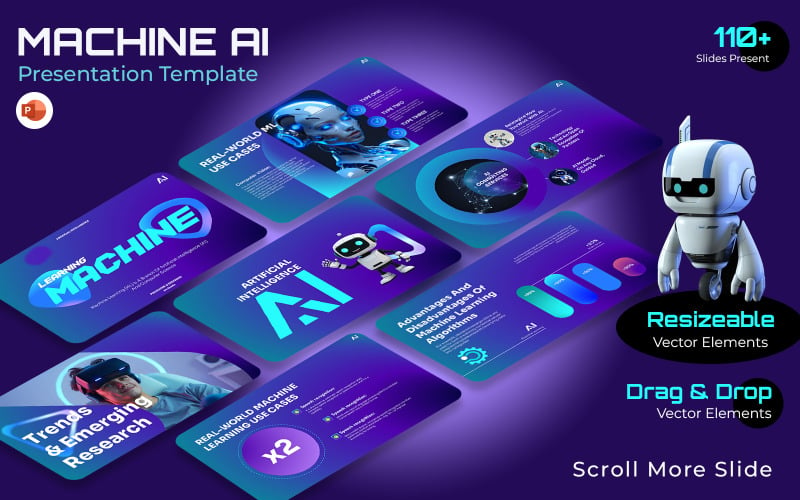Artificial general Intelligence And Machine learning Template
Artificial general Intelligence And Machine learning Template
Machine learning (ML) and artificial intelligence (AI) are closely related fields that have significantly advanced in recent years, revolutionizing various industries and everyday life. Artificial intelligence refers to the broader concept of machines being able to carry out tasks in a way that we would consider "smart," while machine learning is a subset of AI that involves the use of algorithms and statistical models to enable machines to improve their performance on specific tasks through experience. AI encompasses a wide range of technologies, including rule-based systems, natural language processing (NLP), robotics, and computer vision. ML, on the other hand, focuses on developing models that learn patterns from data, allowing systems to make predictions, classify information, or even generate new data based on learned experiences.
At its core, machine learning can be categorized into three main types: supervised learning, unsupervised learning, and reinforcement learning. In supervised learning, models are trained on labeled data, meaning the input data is paired with the correct output. This is commonly used in tasks like spam detection, image classification, and speech recognition. Unsupervised learning, however, deals with unlabeled data, where the system tries to identify hidden patterns or groupings, often used in clustering or anomaly detection tasks. Reinforcement learning is a feedback-based system where an agent learns to take actions within an environment to maximize cumulative rewards, commonly used in robotics and game playing.
- 110+ Unique creative slides ( Image Included )
- 110 Technology
- PowerPoint Template (PPTX)
- 4+ Theme color option
- Unlimited colors change Option
- 16×9 FULL HD Ratio (1920×1080px)
- Easy and Fully Editable in PowerPoint presentation
- Image Also include
- Print Ready
- 3 color variation
- Size:(30×70Inches) with bleed (1 inche)
- Image is included
- free font use
Fundamental Concepts
- Introduction to Machine Learning: Types and Applications
- Supervised vs. Unsupervised Learning: Key Differences
- How Neural Networks Work: A Simplified Explanation
- Understanding the Bias-Variance Tradeoff in Machine Learning
- What is Overfitting? Strategies to Prevent It
- A Guide to Feature Selection Techniques in ML
- The Role of Activation Functions in Neural Networks
- Understanding Loss Functions in Machine Learning
- Training, Testing, and Validation Sets: Best Practices
- Hyperparameter Tuning for Optimizing ML Models
Algorithms & Techniques
- Exploring Decision Trees: How They Work and When to Use Them
- Support Vector Machines: Theory and Practical Use Cases
- K-Nearest Neighbors Algorithm: Intuition and Applications
- Random Forests and Boosting: A Comparative Study
- Gradient Descent Explained: How Machines Learn
- K-Means Clustering: An Introduction to Unsupervised Learning
- Dimensionality Reduction Techniques: PCA vs t-SNE
- Understanding Convolutional Neural Networks (CNNs)
- An Overview of Recurrent Neural Networks (RNNs)
- The Power of Transfer Learning in Modern AI
Advanced Topics
- Deep Learning: How it Works and Why it Matters
- Generative Adversarial Networks (GANs): Applications and Challenges
- Natural Language Processing (NLP): From Text to Meaning
- Reinforcement Learning: Concepts and Use Cases
- Autoencoders: Using Neural Networks for Dimensionality Reduction
- Meta-Learning: The Future of Machine Learning?
- Attention Mechanisms and Transformers in ML
- Self-Supervised Learning: The New Frontier
- Explainable AI: Making Machine Learning Models Transparent
- Quantum Machine Learning: The Next Big Leap
0 Reviews for this product
0 Comments for this product




